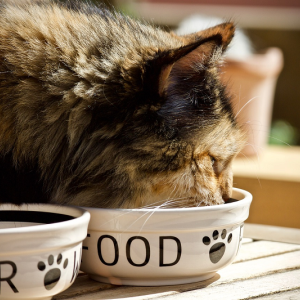
This paper provides an overview of the environmental impacts of pet food production at the global level. It finds that, depending on the data source used, dry pet food production accounts for 1.1-2.9% of global agricultural emissions, 0.8-1.2% of global agricultural land use, and 0.2-0.4% of agricultural water extraction.
Pet foods commonly contain animal by-products (ABPs), which have little value in the market for human food. The authors point out that the environmental impacts allocated to ABPs in pet food depend on one’s assumptions about their value and alternative uses. If pet food is assumed to be a way of using valueless waste products, then it may be assumed that ABPs in pet food have negligible environmental impact. The authors say this underestimates the environmental impacts of ABPs, since ABPs do have a market value and other potential uses (e.g. fertiliser or biofuel). An alternative approach - used by previous studies on pet food’s impacts - is to allocate impacts using a mass balance, i.e. to assume that the impacts of producing an animal are allocated uniformly across all parts of the carcass. The authors say that allocating the same environmental impacts to a kg of ABPs as to a kg of prime steak (say) is an overestimate of the impacts of ABPs, since demand for ABPs is not the primary driver of animal production.
The present study seeks a middle way between these two options and uses an economic allocation approach, which divides up the impacts of ABP and other meat cuts according to their relative price. See Figure 2 of the paper for a comparison of results using economic allocation and mass allocation (which gives higher impacts).
The figures below show the climate, land and water impacts of cat and dog food. Premium brands generally contain higher proportions of meat than market-leading brands, causing greater emissions and land use for the premium brands. Dog food has an average emissions intensity of 1.6 times that of cat food.
Image: Figure 3, Alexander et al. Rate of environmental impact (GHG emissions, land use and freshwater abstraction) per kg of by pet food type, as mean values across data sources.
The authors point out that the environmental impacts of feeding pets are counterbalanced by the social and psychological benefits of companion animals. They suggest that one way of feeding pets more sustainably could be to investigate insect-based pet food. They also recommend pet adoption or re-homing to reduce unnecessary increases in pet populations.
Abstract
Global pet ownership, especially of cats and dogs, is rising with income growth, and so too are the environmental impacts associated with their food. The global extent of these impacts has not been quantified, and existing national assessments are potentially biased due to the way in which they account for the relative impacts of constituent animal by-products (ABPs). ABPs typically have lower value than other animal products (i.e. meat, milk and eggs), but are nevertheless associated with non-negligible environmental impacts. Here we present the first global environmental impact assessment of pet food. The approach is novel in applying an economic value allocation approach to the impact of ABPs and other animal products to represent better the environmental burden. We find annual global dry pet food production is associated with 56–151 Mt CO2 equivalent emissions (1.1%−2.9% of global agricultural emissions), 41–58 Mha agricultural land-use (0.8–1.2% of global agricultural land use) and 5–11 km3 freshwater use (0.2–0.4% of water extraction of agriculture). These impacts are equivalent to an environmental footprint of around twice the UK land area, and would make greenhouse gas emission from pet food around the 60th highest emitting country, or equivalent to total emissions from countries such as Mozambique or the Philippines. These results indicate that rising pet food demand should be included in the broader global debate about food system sustainability.
Reference
Alexander, P., Berri, A., Moran, D., Reay, D. and Rounsevell, M.D., 2020. The global environmental paw print of pet food. Global Environmental Change, 65, p.102153.
Read the full paper here. See also the Table explainer Food systems and contributions to other environmental problems and the research library item The environmental impact of pets, which focuses on the US.







Post a new comment »